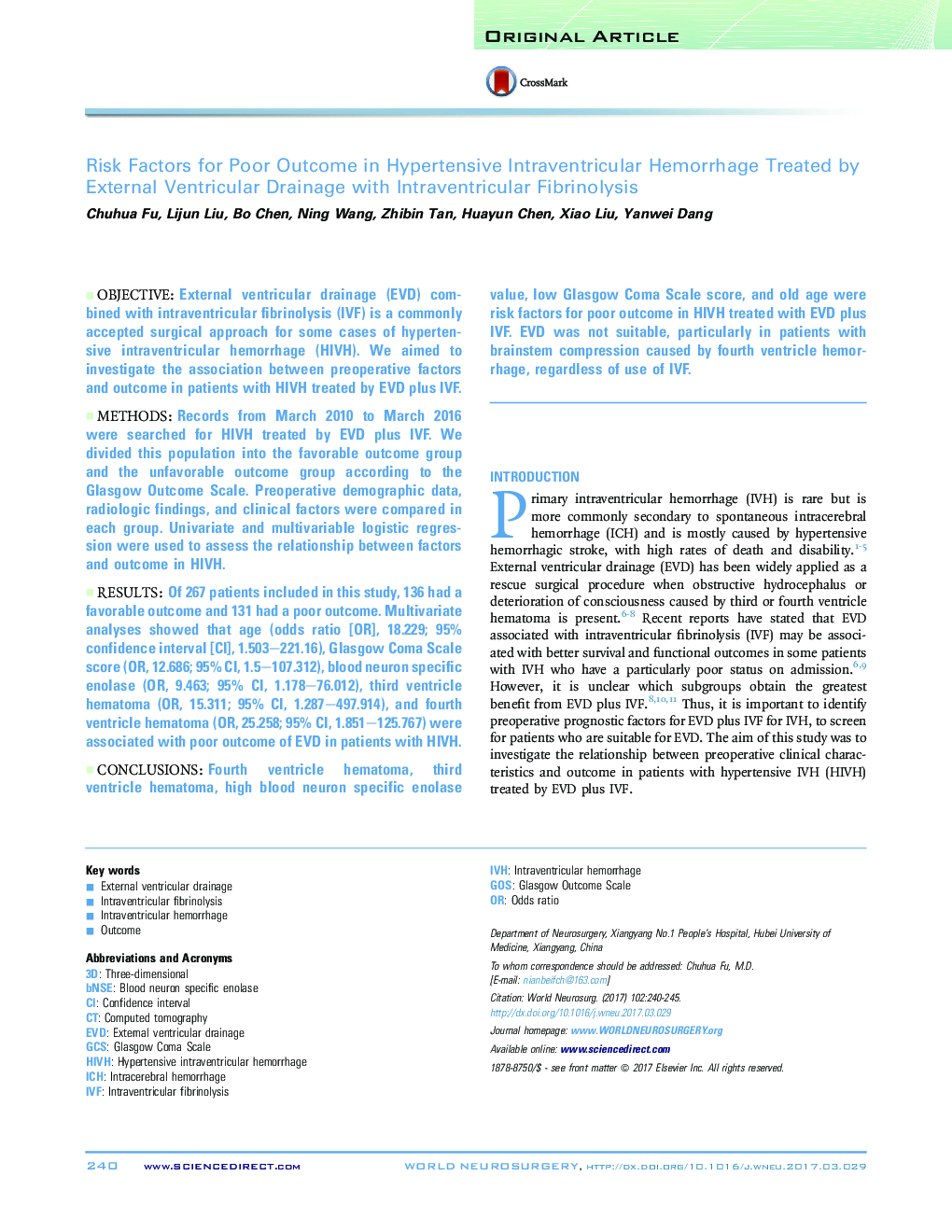| Article ID | Journal | Published Year | Pages | File Type |
|---|---|---|---|---|
| 5634613 | World Neurosurgery | 2017 | 6 Pages |
ObjectiveExternal ventricular drainage (EVD) combined with intraventricular fibrinolysis (IVF) is a commonly accepted surgical approach for some cases of hypertensive intraventricular hemorrhage (HIVH). We aimed to investigate the association between preoperative factors and outcome in patients with HIVH treated by EVD plus IVF.MethodsRecords from March 2010 to March 2016 were searched for HIVH treated by EVD plus IVF. We divided this population into the favorable outcome group and the unfavorable outcome group according to the Glasgow Outcome Scale. Preoperative demographic data, radiologic findings, and clinical factors were compared in each group. Univariate and multivariable logistic regression were used to assess the relationship between factors and outcome in HIVH.ResultsOf 267 patients included in this study, 136 had a favorable outcome and 131 had a poor outcome. Multivariate analyses showed that age (odds ratio [OR], 18.229; 95% confidence interval [CI], 1.503-221.16), Glasgow Coma Scale score (OR, 12.686; 95% CI, 1.5-107.312), blood neuron specific enolase (OR, 9.463; 95% CI, 1.178-76.012), third ventricle hematoma (OR, 15.311; 95% CI, 1.287-497.914), and fourth ventricle hematoma (OR, 25.258; 95% CI, 1.851-125.767) were associated with poor outcome of EVD in patients with HIVH.ConclusionsFourth ventricle hematoma, third ventricle hematoma, high blood neuron specific enolase value, low Glasgow Coma Scale score, and old age were risk factors for poor outcome in HIVH treated with EVD plus IVF. EVD was not suitable, particularly in patients with brainstem compression caused by fourth ventricle hemorrhage, regardless of use of IVF.
